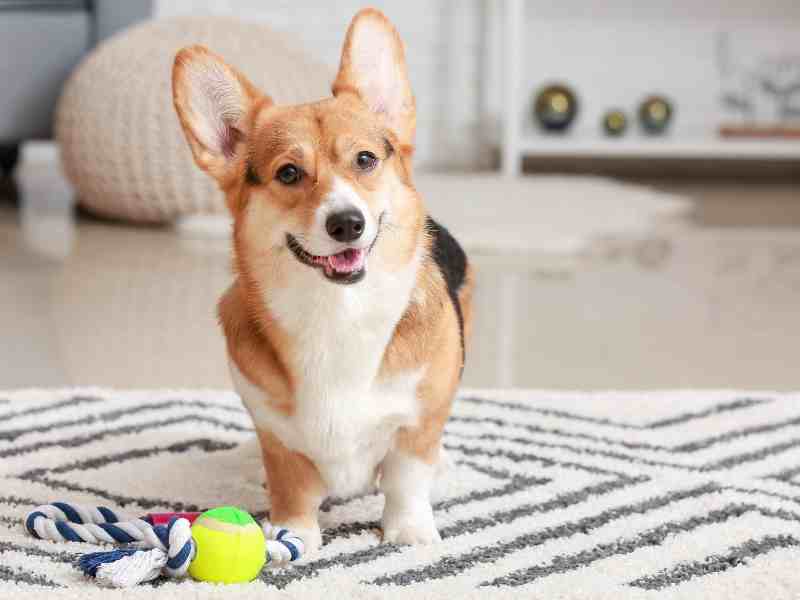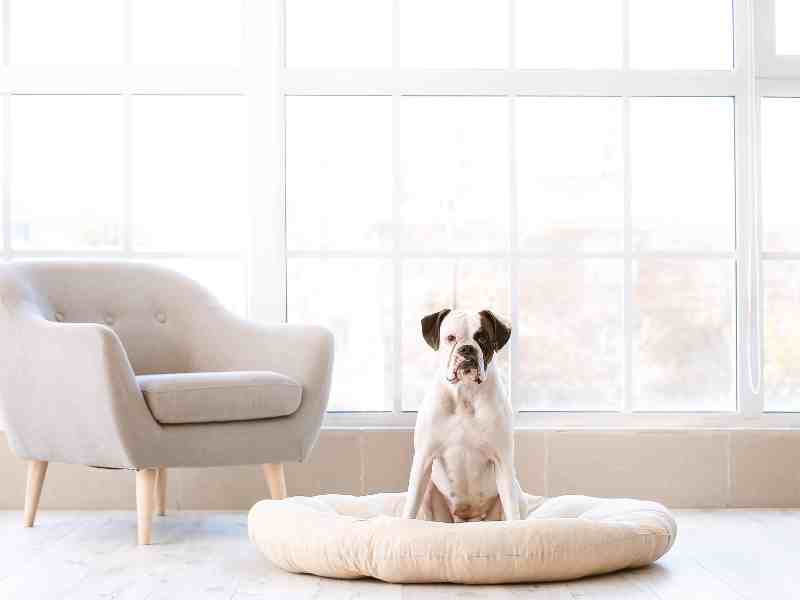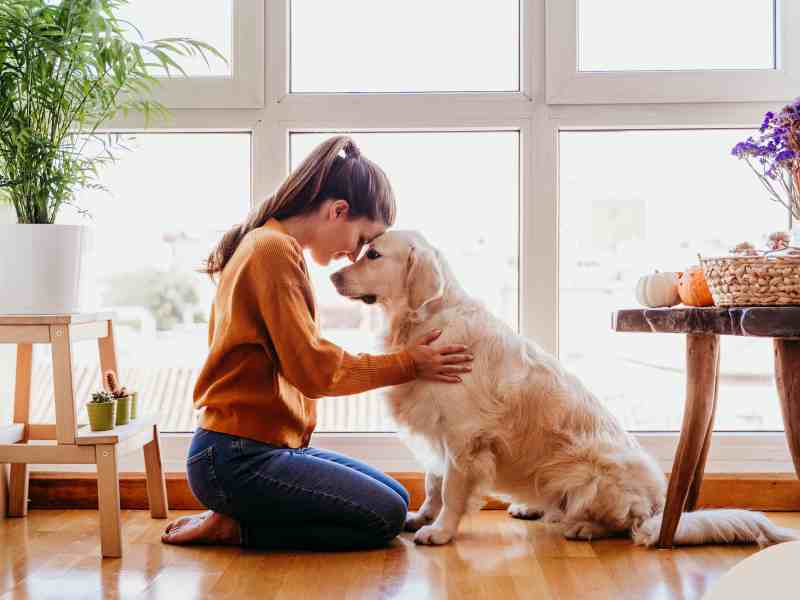Our dogs are more than just pets; they’re our cherished family members. We want to do all we can to make sure their quality of life is the best it can be. One essential aspect of this commitment is building a mobility-friendly environment at home. But why is a mobility-friendly environment for dogs so important?
The Importance of a Mobility-Friendly Environment
Mobility is a super important aspect of a dog’s life. It affects their ability to play, explore, and engage with their surroundings. A mobility-friendly home environment provides dogs the freedom to move comfortably and safely, regardless of their age or health status. They’re not so different from us humans; not being able to move comfortably and freely can bring about bouts of anxiety and depression. As research shows, no dog is immune to mobility issues, and early detection and management interventions can significantly improve a dog’s welfare.
Benefits Of Mobility-Friendly Environments For Dogs
Creating a mobility-friendly environment isn’t just for dogs with existing mobility issues. It’s about proactive care for all dogs, ensuring they have the best possible quality of life throughout their years and it starts with day-to-day routines. This approach aligns with the increasing awareness of the need to provide enrichment for dogs in various living environments, allowing them to engage in natural and fulfilling behaviors, and ensuring they have the physical mobility they need to enjoy their best life.
A mobility-friendly home supports dogs in:
- Maximizing their physical wellness: By providing spaces and features that promote safe and comfortable movement, we can help prevent injuries and manage existing conditions more effectively. It’s no fun watching our dogs recover from injuries; ensuring our homes are safe for them too is important.
- Enhancing mental stimulation: A home that enables free and easy movement allows dogs to explore, play, and engage with their environment, which is crucial for their mental health. Having access to toys and stimulation for their brains is key.
- Supporting aging gracefully: As dogs grow older, their mobility needs change. A home that adapts to these changes helps senior dogs maintain their independence and comfort, particularly as their physical and nutritional mobility needs change.
Understanding Canine Mobility
Just what are we talking about when we talk about canine (dog) mobility? Canine mobility is defined by a dog’s ability to move and transition between positions like sitting, standing, walking, jumping, and running without pain or discomfort. This is influenced by lots of factors, including the dog’s anatomical structure, neuromuscular function, physical ability, and the presence or absence of pain. Their home environment plays a crucial role in either supporting or hindering their mobility. For instance, features like steep stairs, slippery floors, or the lack of supportive bedding can significantly affect a dog’s ability to move safely and independently.
Impact of Home Environment For Dog Mobility Solutions
Dogs spend most of their time at home. This means creating a space that supports their mobility needs is pretty important. This includes considering providing traction on slippery surfaces, creating easy access to different areas of the home, and offering assistive devices for dogs with limited mobility as they are needed. Simple changes in the home can significantly enhance a dog’s comfort and ability to navigate their space, especially for those suffering from conditions like arthritis or who may require things like a dog wheelchair or dog stand.
Different Stages of a Dog’s Life and Their Mobility Needs
As dogs are in different stages of life, they have different mobility needs. Young dogs are usually full of energy and require a safe environment to explore and play. Ensuring their space is free from hazards that could lead to injuries is important. Puppies also benefit from environments that stimulate their mental and physical development.
The needs of adult dogs vary widely based on their breed, size, and activity level. For active breeds, ensuring enough space for exercise is key. For less active or smaller breeds, preventing obesity (which can affect mobility) is crucial. Regular, moderate exercise and a balanced diet are essential.
Older dogs often face challenges like arthritis and general wear and tear on their joints and muscles. Their environment should minimize strain – for instance, using ramps instead of stairs, providing soft bedding, and maintaining a comfortable temperature. Regular, gentle exercise is important to keep their joints mobile, and swimming or hydrotherapy can be particularly beneficial as it allows for movement without putting stress on the joints.
Designing A Mobility-Friendly Home For Dogs
Creating a comfortable and accessible home for our canine friends involves a few essential features that cater to their mobility and ease of living.
Ramps and Stairs for Safe Mobility
Imagine being a small or aging dog trying to navigate steep stairs or jump onto furniture. It’s not only challenging but can be risky. This is where dog amps come in as a game-changer. They’re a must-have for a mobility compromised dog, senior pets, or those tiny breeds that find big leaps daunting. Ramps can significantly reduce the strain of climbing and jumping, especially in areas like entryways or when hopping onto their favorite spot on the couch. They can also help prevent injury for dogs who think they can make it, even though they can’t!
In homes with stairs, safety is key. Adding non-slip treads can prevent those scary slips and falls. If you’re handy, you might even consider installing ramps alongside stairs for easier access. And for the times you’re on the go with your pup, portable and adjustable ramps can make car rides and outdoor adventures much more manageable.
Dog Doors for Freedom and Independence
Dog doors are not just a convenience for us; they symbolize freedom and independence for our dogs. Getting the size and placement right is important when choosing a dog door. It should be a comfortable fit for your dog, considering they might grow over time. Safety is paramount, so opting for doors with secure locking mechanisms or even those fancy electronic ones that open with a sensor on the dog’s collar can give you peace of mind.
Don’t forget about weatherproofing a dog door! A well-insulated dog door keeps the chill out and keeps your home cozy. And yes, some dogs might need a little nudge to get used to their new portal to freedom. A bit of training with positive reinforcements can do wonders, and before you know it, you and your furry friend will be enjoying being able to go out to potty without you having to let them out!
Rest Areas for Comfort and Relaxation
Every dog deserves their own cozy corner, a place where they can unwind and relax without disturbance. This is particularly important for senior dogs or those with arthritis who need a quiet, comfortable space. Providing orthopedic beds in these areas can offer the necessary support for their aging joints.
Accessibility is crucial. These rest areas should be easy to get to, without the need for any climbing or jumping. And in a multi-pet household, it’s nice for each dog to have their personal space. It’s their little haven in the hustle and bustle of the home.
Space Planning: Creating Spacious, Clutter-Free Areas For The Best Dog Mobility
Open floor plans are ideal for dogs to move freely, and open spaces can prevent accidents and injuries. Removing unnecessary furniture and clutter is key, especially for puppies and energetic or large breeds.
Designating areas for play with toys and exercise helps create a structured environment for safe engagement in activities. Consider hard furniture corners or maybe even installing baby gates so your dog will know where they can play and can do so without worrying about pointy or sharp edges hurting them in their play.
Dogs should easily access all parts of the home, including their bed, food, and water. Placement of these essentials should consider the dog’s mobility.
It’s also important to keep wires, small objects, and harmful substances out of reach and regularly check the space for potential hazards that could harm or restrict your dog’s movement.
Flooring Solutions: Best Types for Dog Traction and Safety
Non-slip mats or rugs can provide extra traction on slippery surfaces like hardwood and tiles, which is beneficial for older dogs. When it comes to dog mobility, flooring that they can slip on really can pose a danger if they’re running or even walking. That dog extra grip just doesn’t happen on a slick/solid floor, and considering your dog spends much of their time on the floor, rugs and mats can be their best friends.
Flooring options like laminate, vinyl, or tile are scratch-resistant and easy to clean, suitable for puppies or accident-prone dogs will make your life easier, for sure, but be sure to have rugs and options for your dog to walk comfortably where they need to.
Softer flooring, such as carpet or padded rugs, offers additional comfort and warmth for older dogs or breeds susceptible to joint issues. Dogs with hip dysplasia can find it much easier to get on their hind legs from a carpet or rug than a solid floor, and depending on a dog’s weight, pulling themselves off the floor may take a pretty tough toll on the dog’s body over time.
When considering the flooring of a mobility-friendly home for dogs, it should be comfortable and paw-friendly and avoid harsh textures that could be uncomfortable or harmful.
Furniture Choices: Choosing Pet-Friendly Furniture
Furniture should be covered with durable, easy-to-clean fabrics like microfiber. Removable and washable covers are advantageous for you, and comfortable for your dog. If your dog sleeps on furniture, easy-to-clean furniture will benefit you both.
Furniture height should be accessible and appropriate for dogs. Steps or ramps can help smaller or older dogs access higher furniture like beds or sofas. Furniture should also be stable and sturdy to prevent tipping over, which is an important consideration for large or active dogs! Consider furniture with rounded edges to prevent injuries, avoiding pieces with sharp corners or edges.
Investing in quality pet beds that support joint health, such as a recessed orthopedic bed, is beneficial, particularly for older dogs with arthritis or joint issues. Choose one with a bed cover that you can clean easily and may help with dog mobility because the memory foam supports aging joints.
Additional Safety Concerns For A Dog Mobility-Friendly Home
When it comes to creating a safe haven for your dog, it’s not just about the cozy corners and the fun toys. It’s also about making sure that every inch of your home is a safe zone for them.
Think about all those little things around your house that might seem harmless but can actually be quite risky for your dog. For starters, take a look around and secure or remove any items that could easily be knocked over or become a choking hazard. We all know how curious and playful dogs can be, so it’s better to be safe than sorry!
Dogs and electrical cords do not mix well. To prevent any accidental chewing on these cords (which, let’s be honest, dogs seem to find irresistible), keep them out of reach. Using cord protectors can also be a lifesaver, literally. It’s all about ensuring your curious buddy doesn’t get a shock, both metaphorically and literally.
Be Prepared for Emergencies
Last but not least, always have an emergency plan in place. It’s something we often overlook, but knowing exactly what to do and where to go in case of an emergency can be a lifesaver. Make sure there’s a clear, easy path for your pets to exit the house safely. It’s all about being prepared, so that if something happens, you and your furry friend can make a quick and safe escape. Particularly if they are a mobility-compromised dog, you always want to be sure you have an emergency plan.
Holistic Approaches to Mobility
In addition to physical adaptations in the home, holistic approaches like physiotherapy, acupuncture, and a diet rich in anti-inflammatory agents and antioxidants can significantly benefit dogs–with and without mobility issues. Helping keep your dog’s mobility at its best with supplements was what we wanted to do for our own large dogs, Bernie and Lady.
We wanted to find the best ingredients we could, and what we found was that many of the ‘popular’ joint and mobility solutions for dogs were just that popular but not necessarily the most research-backed.
Bernie’s Marvelous Mobility: A Leap Forward in Dog Health
Our approach to canine mobility is simple: we trust in the power of research-backed ingredients to support our furry friends in their most active moments and as they age. Bernie’s Marvelous Mobility isn’t just another supplement; it’s a scientifically formulated blend we designed for our dogs who love running, jumping, and embracing life. We want that for your dog too!
Why We Skip “Popular”
Glucosamine, chondroitin, and MSM have been the go-to for joint health, but the tides are turning. While they’re popular, we believe in only giving your dog the best science has to offer – which is why we’ve developed a product based on ingredients that research suggests are more beneficial.
The Power-Packed Ingredients of Bernie’s Marvelous Mobility
- Omega-3 Fatty Acids (DHA & EPA): Derived from sources like flaxseed, anchovy, and algal oil, these essential fats are champions for heart, brain, and joint health.
- Antioxidants: Astaxanthin, blueberries, and green tea extract (decaffeinated, of course) help combat free radicals – those pesky molecules that can lead to a host of health issues.
- Anti-inflammatories: We harness the natural power of turmeric/curcumin, green-lipped mussels, and Boswellia to keep inflammation – a common cause of mobility issues – at bay.
- Proteins & Collagens: Undenatured Type-II Collagen is a newer player in the joint health game, showing promise for maintaining cartilage integrity.
- Vitamins and Trace Elements: Vitamin C, Vitamin K2, and boron are the unsung heroes, supporting everything from immune health to bone strength.
- Additional Nutrients: Kelp, yucca root extract, and other carefully chosen ingredients support a robust internal system for your pet.
Each ingredient is selected not just for its individual benefits but for how they work together to support your dog’s mobility and overall health. They’re science-backed and dog-approved, and we wouldn’t give our dogs (or yours) anything less!
We believe every dog deserves the joy of movement and mobility. We’ve poured our passion, expertise, and the latest scientific research into creating a product that supports the active lifestyle of your best friend. It’s not just about less pain today; it’s about more play tomorrow and every day after.


